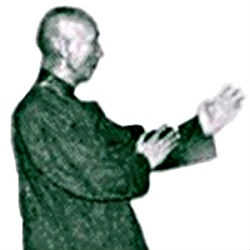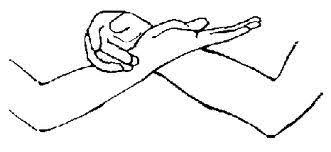If we look at this WC guard (many CMA style use this guard too),
- His left arm is extended but his right arm is not. His right hand is next to his left elbow joint.
- His left hand has less distance to generate punching power. His right hand has more distance to generate punching power.
- Both of his hands are away from his head.
- His "front door" is protected well, but his both "side doors" are exposed.
- He can interrupt his opponent's punch away from his head.
- He uses "protect center from inside out" strategy.
If we look at this boxing guard,
- His both arms are close to his head.
- Both of his hands have enough distance to generate punching power.
- His "front door" is exposed. Bust both of his "side doors" are protected well.
- He need to interrupt his opponent's punch near to his head.
- He uses "protect center from outside in" strategy.
Since the
- WC guard can protect front door well, but can't protect side doors well (hook punch can still go around the WC guard),
- Boxing guard can protect side doors well, but can't protect front door well (straight punch can still go through between the boxing guard),
Is there a "guard" that can have the PRO of both guards, but doesn't have the CON of both guards? The rhino guard that you hold both hands into a big fist, extend both arms, and hide your head behind can be the choice. The only issue with the rhino guard is it's good for establishing clinch. It's not good for striking. Unless you are a wrestler, the rhino guard may help you in defense, but it may no help you in offense (if you are a pure striker).



